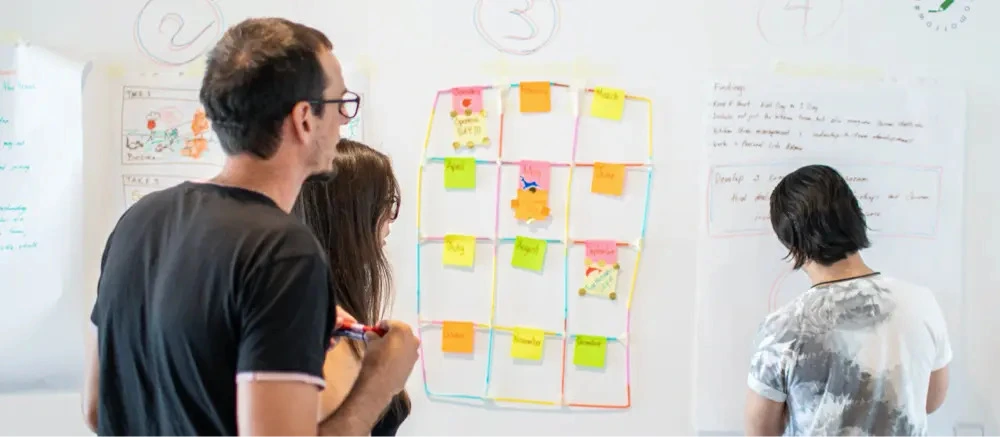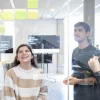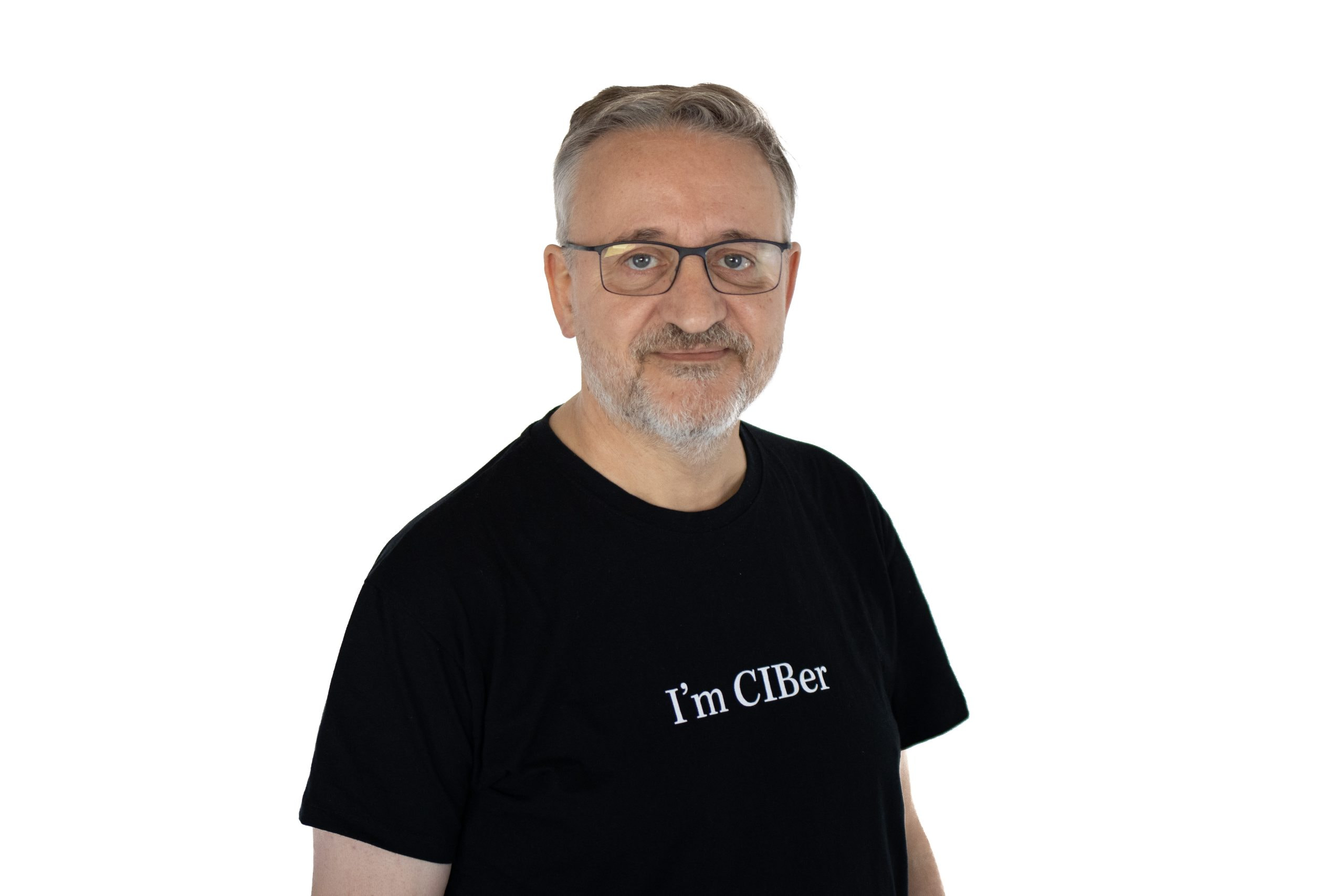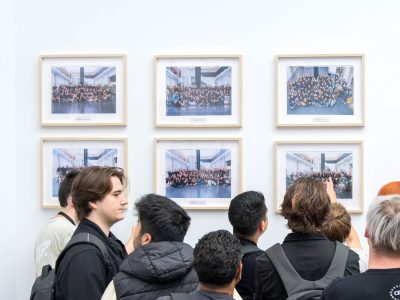The obsession of the Culinary Institute of Barcelona is to improve its teaching procedures and models so that young people are able to overcome the scenarios of change, make them their own and know how to adapt to new circumstances with absolute ease.
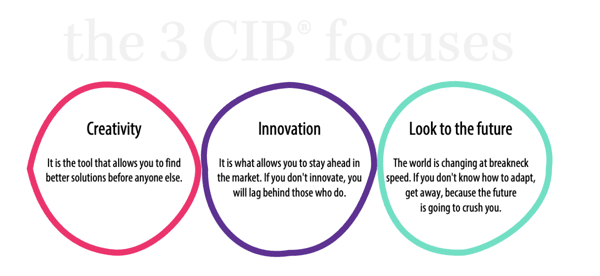
In this post you will learn more about the three focuses in which the Culinary Institute of Barcelona develops its educational and learning model: creativity, innovation and a look to the future. Through these focuses, students are taught to set, pursue, and accomplish goals, not to be afraid of making mistakes, and to become capable of doing truly wonderful things.
Creative Learning
Creativity is not a talent, but an attitude, a way of acting from freedom of thought. It is accessed through the conviction of that freedom, consciously or unconsciously. The role of schools is, among other things, to provide that framework of freedom so that students can exercise creativity, without fear of penalty or punishment. As Ken Robinson defended in his thesis: creativity in education should be as important as literacy.
“In schools creativity is despised and only skills in mathematics, language or history are rewarded, when they should be at the same level. Children have a capacity for innovation and extraordinary talents that are wasted.” – Sir Ken Robinson
The same thing happens in cooking schools: they insist on reproducing recipes, which is the same as teaching copying, and personalization, variation and contribution are penalized.In the CIB no recipes are taught, instead the student is given the ability to handle himself in three dimensions: product, technology and context, so that he can know, understand, apply, analyze, evaluate and create new ideas and solutions.
Stigmatizing error kills creativity
In cooking schools it is instilled and penalized, even in a humiliating way, that no one should depart from the norm, from what has already been established by others.At the CIB, students are encouraged to do so, to go outside the norm in a systematic way. We establish objectives and we understand that everything a student says or does about it is a proposal and it is neither good nor bad, but rather meets or does not meet those objectives.
Powerful feedback mechanisms are also established so that the student learns from mistakes efficiently. Traditionally, in education, error has been related to repetition and imitation; If you cannot repeat or imitate correctly, it is considered a mistake (in the negative sense). At CIB we know that error is part of the creative process and we encourage students to try without caring about making mistakes.

Tearing down the barriers to creativity
Why creativity?
Creative evolution has been driven by a series of interconnected trends that have combined to change the way we achieve professional success in the modern world. Today’s workspace is one of increasing complexity, with circumstances that change rapidly and unexpectedly. To this must be added the rise of automation and artificial intelligence, which promise a general restructuring of the way work is done in different sectors.
The death of the creative “genius”
Along with these engines there is an evolution in attitudes regarding creativity and what it means to be creative. In the past, organizations turned to so-called ‘creative geniuses’ to innovate and be competitive, believing that creativity was something only the chosen ones were born with and that magic came to them while they were alone, locked in a garage or in a laboratory.These perceptions have evolved and today the most widespread idea is that everyone has the innate ability to be creative, and that creation takes place in a caring community.
The restrictions of creativity
Despite this change in attitudes and the urgent need for more creative thinking, most schools and companies today are still not able to provide the environment and conditions necessary for creativity to take part. of the cultural gear. This theory is supported by research that reveals that 40% of workers state that creativity is not encouraged or rewarded by their employer and 69% state that they are not developing their full creative potential.
Creativity doesn’t come out of nowhere; It needs to be encouraged and supported in the context of a creative environment where there are other people who are also being creative.
Rearrange behavior in the workspace
All these restrictions and barriers are in place in our current way of working, and this is the reason why schools have to restructure their spaces to encourage those habits and behaviors in which creativity can flourish.
Harvard professor Shelley Carson, in her book Your Creative Brain, explains that there are different activation patterns in the brain that are associated with specific modes of creative thinking. We move between different patterns, absorbing new information, connecting dots, imagining new possibilities, executing based on those ideas and then criticizing and improving them. The activities and tools that we need to adequately immerse ourselves in these different modes vary and, in this way, the physical and cultural environment of the workspace influences when it comes to facilitating the ebbs and flows of these thought patterns.
The courage to be creative
In a world where change and uncertainty have become the norm, and where technology is infiltrating many aspects of work, workers must be able to take advantage of what makes them human. Everyone has the power to be creative, but organizations have to be brave to allow creativity to flourish. Doing so will not only lead to greater innovation and business growth, but will also help build a more engaged and satisfied workforce, prepared and confident for the future.
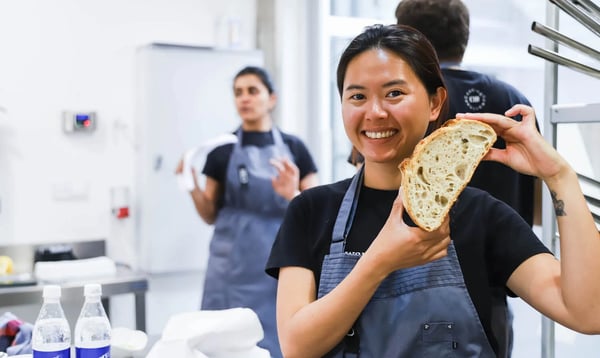
Innovation and Design Thinking
At the Culinary Institute of Barcelona, students are trained to be able to innovate, to do things that no one has done before, and they do it by instilling the Design Thinking methodology.Innovation is understood as a process based on three steps:
- Inspiration: Generally, the design innovation process begins with the inspiration phase: understanding the problem or opportunity.
- Ideation: The process is characterized by alternating divergent and convergent thinking, typical of the design thinking process. They can be visions of new product offerings or choices between various ways to create new experiences.
- Implementation: The third space of the design thinking innovation process is implementation, when the best ideas generated during ideation are converted into something concrete.
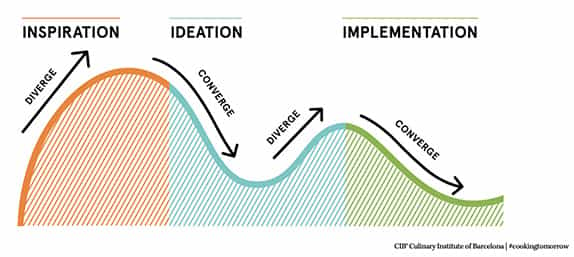
The principles of innovation for IDEO
IDEO is one of the most admired companies for its contribution to the development of innovative methodologies. Over the years, IDEO has developed some relevant principles on innovation:
- One conversation at a time. You don’t have to interrupt others, you have to listen to your colleagues with respect and as if it were the first time it had been done. In listening there is a lot of learning.
- Stay focused on the topic at hand. The innovation process makes it very easy to leave the area where you want to innovate and lose focus, so you have to keep in mind the goal you have set.
- Encourage wild ideas. Innovation involves thinking in a daring way, beyond the established rules. You have to dare, it’s the place.
- Defer judgment. Don’t judge from start. All ideas can be good a priori. Don’t judge until the idea grows and develops.
- Build on ideas of others. You can help turn a wild idea into a successful innovation.
- Be visual. We are visual beings. You have to draw, make sketches, use colors and schemes or drawings.
- Everyone must participate. All opinions are good, everyone has something to say and something to contribute. Avoid people who are not open to teamwork.
- Go for quantity. Ideas by themselves are worthless (ideas are not an objective, but a means), you cannot innovate without them so it is important to generate the more the better in the first stages of a project
- Speed. From the idea to the detailed design, then to the prototype… but we have to quickly test it in the real world.
This set of principles is linked to the concept that there is no innovation without the sale or adoption of ideas, so it is necessary to build solid concepts capable of convincing. You can be working for years to refine a good idea, but if it is not sold or adopted by a reasonable critical mass, it is not innovation, it is something else.
Look to the future
Humanity has never faced so many changes as in this new era that is just beginning. These are changes that affect all social, economic, cultural, technological, health, political and values spheres.
“We must prepare our students to be true positive catalysts in their work teams, reliable and efficient leaders, bearers of lasting values and, above all, capable of anticipating changes because they are excellent observers and analysts of their observations.”
Educating for the unknown and unpredictable includes training our young people not only to look to the future, but also in skills such as creativity and innovation, so that they acquire the habit and methodology according to the challenge of that future.Most of our young people already have the attitude of change naturalized, but its acceleration is going to question it and will generate, predictably, intergenerational confrontations such as has never been seen before.
The generational clash is only one of the foreseeable conflicts and will affect the rules of the market, with aging populations in the majority versus new minority generations that will lead the traction action of those markets.

At the CIB we look to the future, both transversal and priority in the training of our students. So that they are protagonists of that new world and not its passive witnesses or its victims.
We are experiencing change at an unprecedented speed, and it is exponential. It is only necessary to analyze the change of scenery that COVID is leaving to see how the behavior of the market and consumption is affecting new models of restoration such as takeaway, dark kitchen, fifth range or healthy eating. It is just an example of what happens and the spearhead of what has to happen.
The future overwhelms us, in the next ten, twenty or thirty years humanity will see drastic and environmental changes. It is estimated that the world population will reach ten billion people. Figures that make us reflect on the necessary change in human nutrition. The food of the future, how to consume it, produce it and the environmental trace of its consequence.
Today, we are being agents of change and participants in thousands of startups and projects that are born from the idea of changing the world, companies like impossible foods, companies that create food according to the composition of our DNA, urban vertical fields or 3D printers that print meat from vegetable protein. These are some of the many examples that the Culinary Institute of Barcelona brings to its classrooms.

